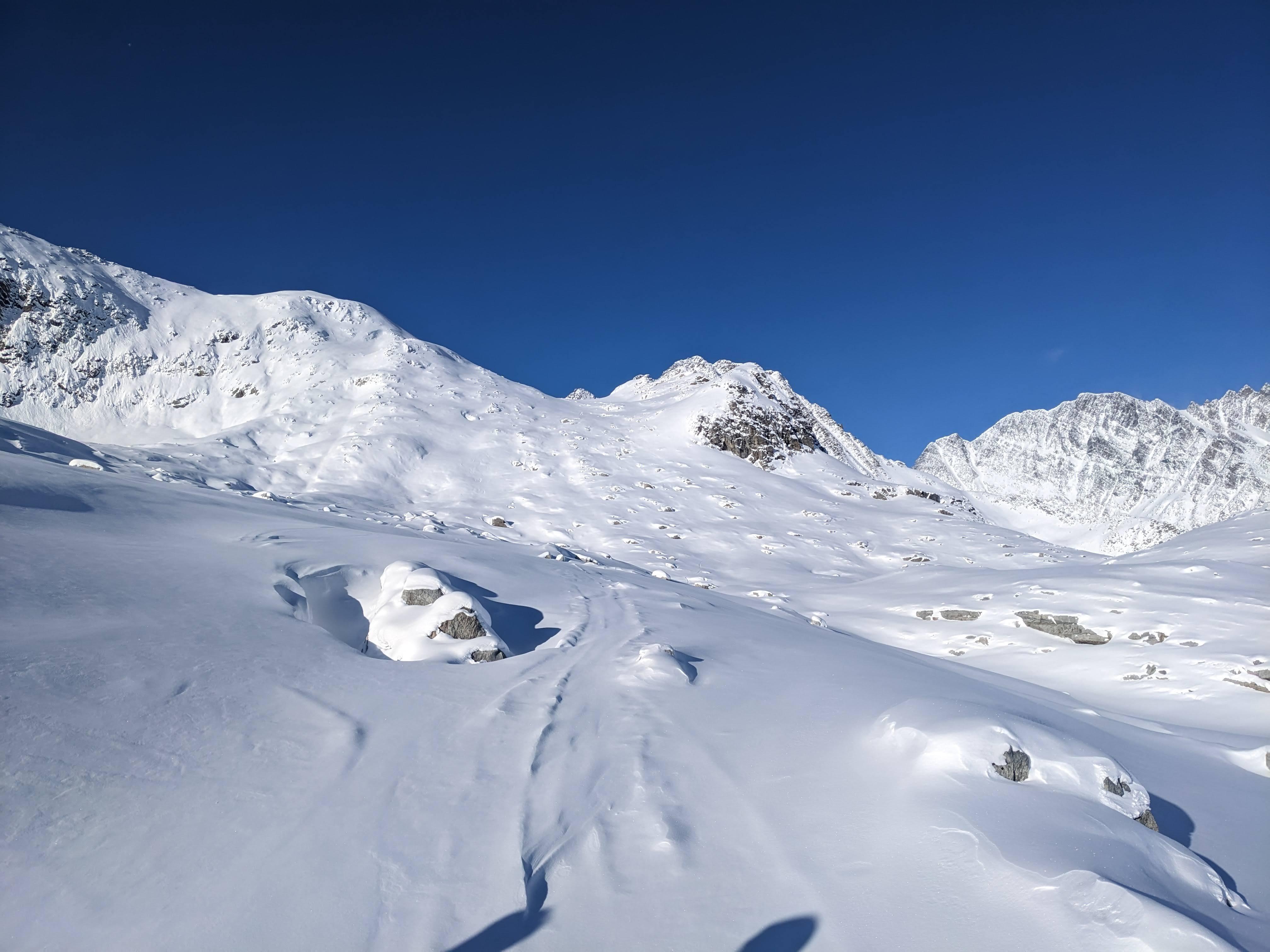We spent Dec 19-20 ski touring in Rogers Pass. Day 1 we did the Little Sifton traverse and Day 2 the loop over Lookout Col into the Ravens.
Although temperatures never climbed above -20C, day 1 was sunny and surprisingly enjoyable. We found no wind effect in the alpine. The main hazards were loose dry from the rapidly faceting snow and early season hazards under the thin, unsupportive snowpack. The skiing was good though and the loop is worth doing right now.
Day 2 wasn’t much warmer, but again surprisingly enjoyable. Temperatures stayed below -20C and we had flurries for most of the day with light winds. Definitely low tide getting up to Lookout col.
We dug a snow profile on the south side of Lookout col @ 2150m. Height of snow was variable between 130cm - 170cm. The Nov 17 Persistent Weak Layer (PWL) was very prominent down 70cm. Results were CTM15 (RP) down 45 (Dec 5), CTH27 (RP) down 70 (Nov 17), ECTX. To translate, this means a Compression test produced 2 Resistant Planar (RP) clean fractures - one on the 15th loading step down 45cm on the Dec 5 layer & one on the 27th loading step down 70cm on the Nov 17th layer. An Extended Column Test produced no result.
These results show that the PWL's are beginning to bond in this particular spot, but we decided regardless to ski a conservative line with previous skier traffic off the steep S side of Lookout col. The consequences of an injury or avalanche in these cold temps being forefront in our mind.
Overall, we found great skiing with old tracks mostly filled in. Rocks, stumps and open creeks are still a very real hazard. Stay warm out there!
Amelie Goulet-Boucher (ASG)
Danielle Touche (ASG, ARG)
Christian Schlumpf (ASG, AAG)
Lilla Molnar (MG)

